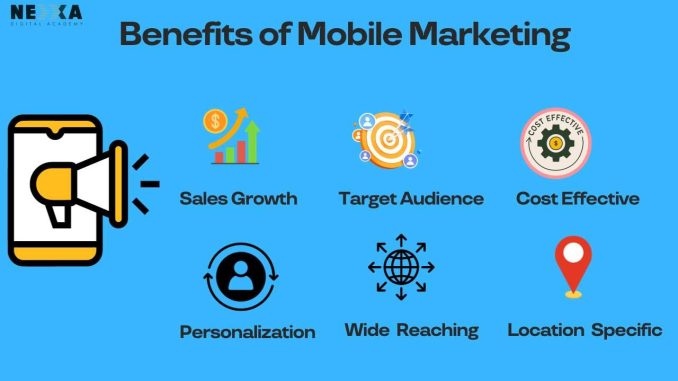
## How to Use Mobile Marketing for Growth: Unlocking the Power of the Pocket
In today’s interconnected world, the smartphone has transcended its original purpose as a communication device; it has become an indispensable extension of ourselves. From checking emails and Browse social media to making purchases and seeking information, our lives are increasingly lived through mobile screens. For businesses, this pervasive mobile presence represents an unprecedented opportunity for growth. Mobile marketing, therefore, is no longer an optional add-on but a fundamental pillar of any robust growth strategy. Mastering its nuances allows businesses to connect with their audience in highly personal, timely, and impactful ways, ultimately driving engagement, loyalty, and revenue.
At its core, mobile marketing is about meeting your customers where they are – in the palm of their hand. This means optimizing every digital touchpoint for the mobile experience, ensuring that interactions are seamless, intuitive, and designed for on-the-go consumption. The first and arguably most foundational step in this journey is ensuring your **website is fully mobile-responsive and optimized for speed**. A clunky, slow-loading, or non-responsive website on a smartphone is an immediate conversion killer. Consumers expect instant gratification; if your site doesn’t load quickly or is difficult to navigate on a small screen, they will simply bounce to a competitor. Responsive design ensures your content automatically adjusts to any screen size, while image optimization and streamlined code ensure rapid loading times, providing a frictionless user experience crucial for retaining attention.
Beyond a foundational mobile-friendly website, effective mobile marketing leverages a diverse array of tactics, each designed to capture attention and drive specific actions. **SMS marketing**, for instance, might seem old-school, but its effectiveness remains remarkably high. With open rates often exceeding 90%, a concise, value-driven text message can be incredibly powerful for promotions, order updates, appointment reminders, or exclusive offers. Companies like Starbucks have leveraged SMS effectively for years to drive foot traffic with timely promotions. The key here is permission-based marketing – ensure recipients have explicitly opted in to receive messages, and provide a clear, easy way to opt out, maintaining trust and avoiding spamming.
Furthermore, for businesses with dedicated mobile applications, **push notifications** are an unparalleled tool for re-engagement and personalization. These short, attention-grabbing alerts can deliver timely updates, personalized recommendations based on past behavior, or even re-engage users who have abandoned their shopping carts. Netflix, for example, masterfully uses personalized push notifications to recommend new shows or remind users about episodes they haven’t finished, directly influencing usage and retention. The power lies in their immediacy and ability to bypass the need for a user to actively open an app or email.
The omnipresence of social media on mobile devices makes **social media marketing** inherently a mobile marketing strategy. Platforms like Instagram, TikTok, and Facebook are predominantly accessed via smartphones, making them prime channels for reaching and engaging your target audience. Crafting visually compelling, short-form video content (e.g., Reels, TikToks), running targeted mobile-first ad campaigns, and encouraging user-generated content are essential for building brand awareness and fostering community. Many brands run highly successful campaigns by leveraging influencers on these platforms, whose content feels native to the mobile social feed and resonates authentically with their followers.
Moreover, **location-based marketing and hyper-personalization** offer immense potential for businesses with physical presences. Technologies like geofencing allow businesses to deliver targeted messages or offers to potential customers when they enter a specific geographic area near a store. Sephora, for example, has successfully used geo-targeted notifications to alert customers near their stores about new arrivals or special in-store events, driving immediate foot traffic. Coupled with personalized content derived from past purchase history or Browse behavior, these strategies create highly relevant and impactful interactions, significantly increasing the likelihood of conversion.
Finally, integrating **mobile commerce (m-commerce)** capabilities seamlessly into your overall strategy is vital. With the vast majority of online purchases now influenced by or completed on mobile devices, ensuring a streamlined, secure, and intuitive mobile checkout process is non-negotiable. This extends to integrating mobile payment options like digital wallets (Apple Pay, Google Pay), which offer unparalleled convenience and reduce friction at the point of purchase. Businesses like Domino’s Pizza have excelled by creating highly optimized mobile ordering apps that simplify the entire purchase journey, making it incredibly easy for customers to complete transactions on their phones.
In conclusion, leveraging mobile marketing for growth is about more than just having a mobile-friendly website; it’s about embracing a mobile-first mindset across all your digital initiatives. By focusing on mobile responsiveness, utilizing direct communication channels like SMS and push notifications, mastering mobile social media, employing location-based and personalized targeting, and ensuring seamless mobile commerce experiences, businesses can effectively tap into the enormous potential of the smartphone. This strategic alignment with consumer behavior not only drives immediate sales and engagement but also cultivates deep, lasting relationships with customers who increasingly rely on their devices for every aspect of their lives, ultimately charting a robust course for sustainable business expansion.